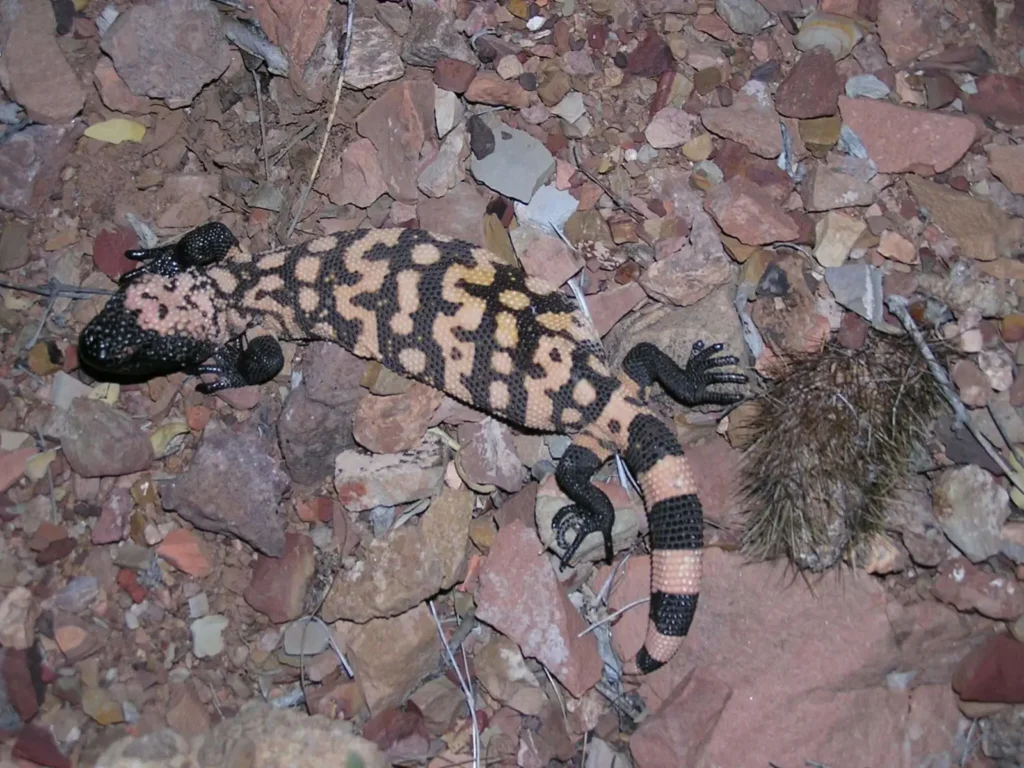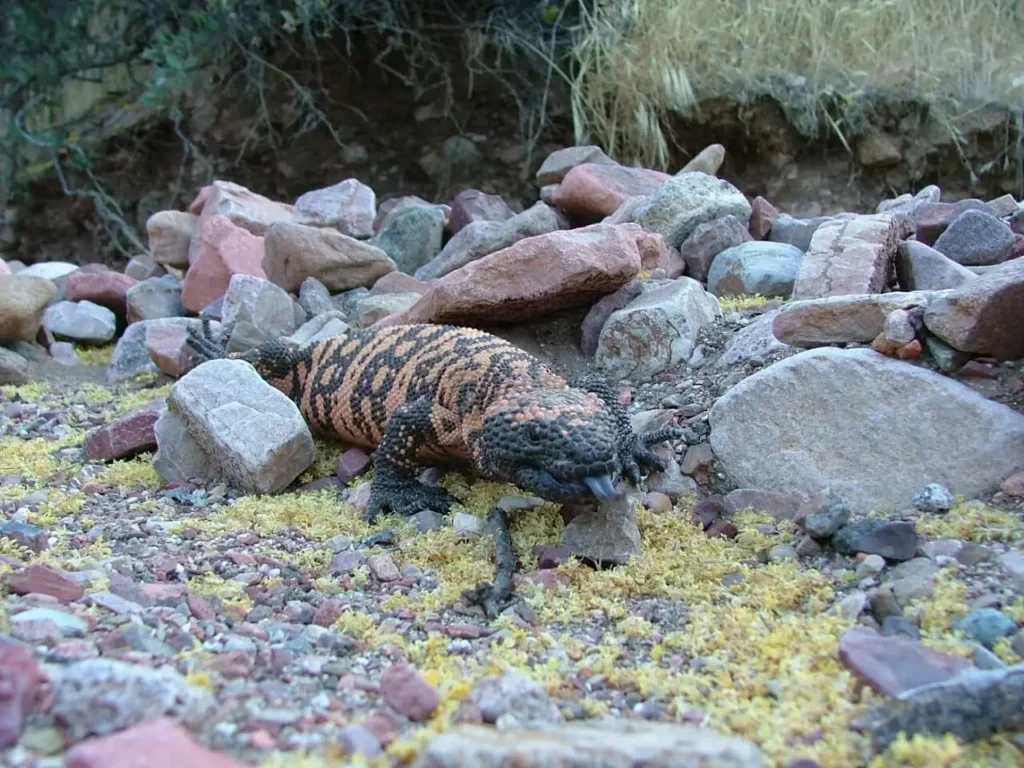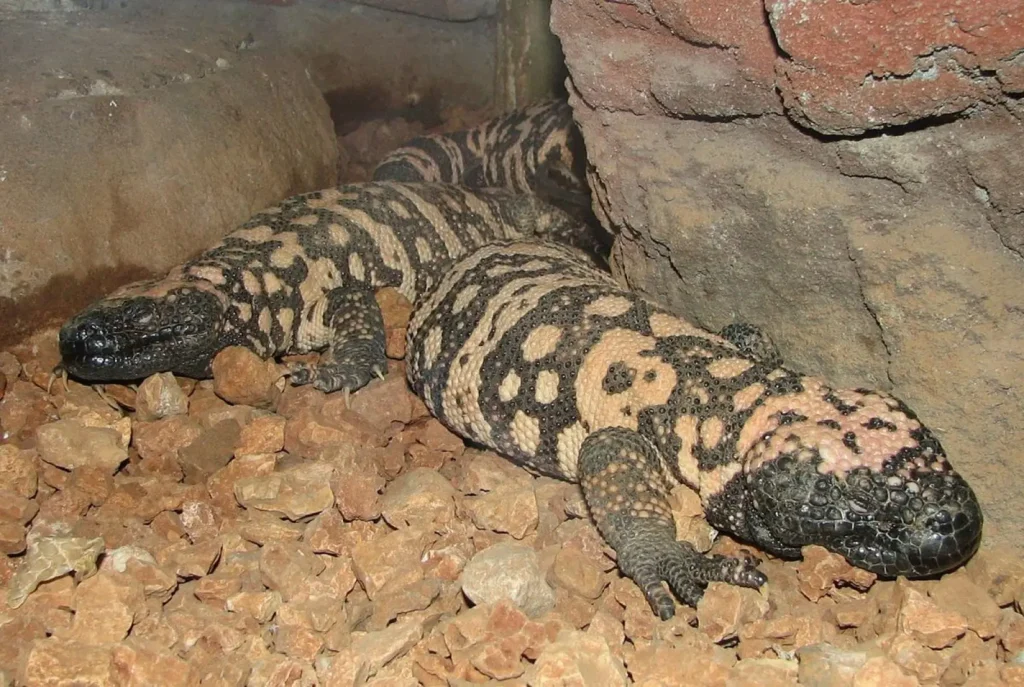The Arizona poisonous tooth snake (Crotalus scutulatus) is a species of venomous snake from the family Gurzae that lives in the southwestern United States, particularly in the states of Arizona and New Mexico. This species is one of the most well-known and studied snakes in North America due to its danger and distinctive appearance.

Classification and scientific name
• The Kingdom: Animalia
• Type: Chordata
• Class: Protomolecules (Reptilia)
• Row: Snakes (Serpentes)
• Family.: Viperidae
• Gender: Crotalus
• View: Arizona poison ivory (Crotalus scutulatus)
Appearance
📏 Sizes
- Body length: 50-90 cm (in some cases up to 1.5 m)
- Weight: up to 500 g
🎨 Color scheme
- The Arizona poisonous tooth has a distinctive coloration that helps it to camouflage itself in its natural environment.
- Its color varies from light brown to gray with dark spots.
- The back has darker spots that form a characteristic pattern, and the belly is often pale with or without spots.
- A characteristic feature is a large triangular skull and a thick tail, ending in the famous "sonic crunch".

Range and habitat
🌍 Spread
- The Arizona poisonous tooth inhabits the southwestern United States, in particular in the states of Arizona, New Mexico, and south to northwestern Mexico.
- It is commonly found in deserts, semi-deserts, rocky areas, and open spaces with grass cover.
🌿 Place of residence
- Snakes prefer dry, warm climates with rocky or sandy soil.
- They often hide in crevices, under rocks, or in burrows to escape the heat and find shelter from predators.
Food
🍽️ Ration
- The Arizona poisonous toothfish feeds mainly on small mammals, birds, and lizards.
- It hunts with its venom, which paralyzes or kills its prey.
🧳 Hunting method
- The snake uses its venom to kill its prey or immobilize it.
- The venom has a nerve-paralyzing effect and contains enzymes that break down prey tissue, making it easier to digest.
Behavior and lifestyle
🧭 Activity
- The Arizona poisonous tooth is a daytime predator, but can also be active at night, especially on hot days.
- It is quite calm and not aggressive, but it can attack if it feels threatened.
🌿 Social behavior
- Snakes are solitary animals and are usually kept apart, except during mating season.
- They have a habit of preserving territory and can be aggressive when invaded.

Poison
💉 Properties of the poison
- The venom of the Arizona poisonous snake is highly toxic and can cause serious consequences for humans if the necessary treatment measures are not taken.
- The venom contains neurotoxins that cause blockage of nerve impulses, which can lead to paralysis, respiratory failure, and even death.
- But usually a snake does not attack for no apparent reason, and bite cases rarely end in death thanks to modern treatment methods.
Reproduction
🦎 Reproduction
- The Arizona poisonous tooth beetle lays eggs, usually from 4 to 20 eggs in one clutch.
- Eggs are laid in places with high humidity, often in cracks or under stones, where the temperature remains stable.
- Young snakes hatch from eggs in about 60-90 days.
Life span
⌛ Life span
- The Arizona venomous tooth can live in the wild for up to 20 years, although in captivity this period can be somewhat shorter.
Interesting facts
✔️ The Arizona poisonous tooth can create a distinctive sound with its tail "ear" that serves as a warning to potential predators or humans.
✔️ The snake is able to withstand long periods without food, which helps it survive in environments where food may be limited.
Conclusion
The Arizona venomous toothpick is one of the most dangerous snakes in North America, but it is also an important part of the local ecosystem. Its ability to react quickly and its use of venom to hunt makes it an effective predator, while also commanding respect for its danger to humans.